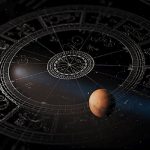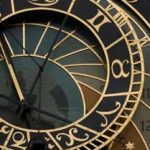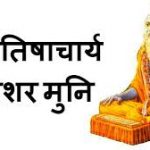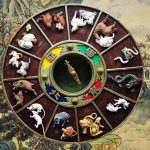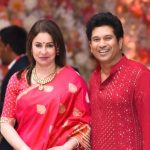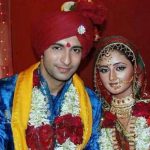Horoscope matching is a cultural phenomenon that is blindly followed by many communities. The belief in the superficial matching of the horoscope by the Gun Milan system is out of proportion with the actual efficacy of the system in ensuring a suitable match. The proper understanding of Vedic astrology shows that Gun Milan is just a preliminary test. When there is a reasonable Gun Milan score the horoscopes should be further compared with each other. A less than average Gun Milan should mean that the process stops there and the match is rejected. It is merely an eligibility test and therefore not the final verdict.

The Concept Of Gun Milan
The concept of Gun Milan is based on the fact that the Moon signifies the mind. Therefore the Nakshatras of the boy’s Moon and girls Moon are compared to each other in order to see if they have the most basic of compatibilities. There are different aspects of Gun Milan that are very important for basic compatibility. Since these points of comparison are eight in number they are also called Ashtakoot. Ashta means eight and Koota means aspects.
Varna
Varna is also Varan or Jaati. This is not a caste system but instead compares the mindset of the person. The Varnas that could be assigned to each Nakshatra are either one of Brahmin, Kshatriya, Vaishya or Shudra in descending order. It is desirable that the Varna of the groom be higher than or equal to that of the bride. If this condition is fulfiled there is 1 point given and if not none.
Vashya or Vasya
The Rashis are categorised by their representations as follows:
- Quadruped or Chatuspada: Mesha (Aries), Rishaba (Taurus), 2nd half of Dhanus (Saggitarius) and 1st half of Makara (Capricorn).
- Human or Dwipada/Manushya: Mithuna (Gemini), Kanya (Virgo), Tula (Libra), 1st half of Dhanus (Sagittarius) and Kumbha (Aquarius)
- Jalachar or Watery: Karka (Cancer), 2nd half of Makara (Capricorn) and Meena (Pisces).
- Banachar/Vanachar or Forest Dwelling: Simha (Leo)
- Keet Or Insect: Vrischik (Scorpio)
Matching Vashya gets a full score of 2 points.
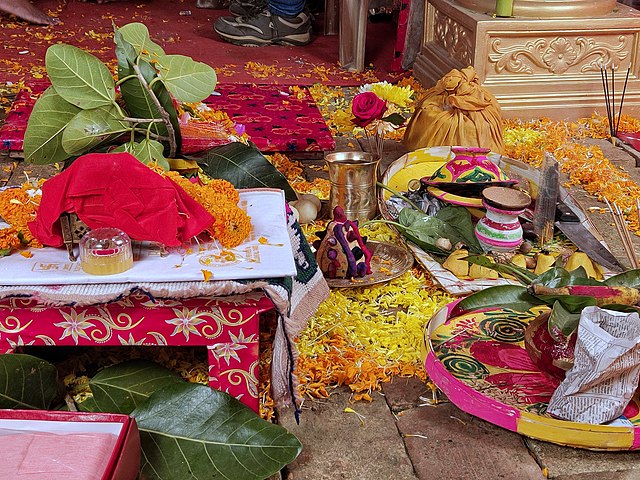
Tara/Dina
Count the distance of the groom’s Nakshatra to that of the bride and divide the total by 9. A remainder of 3,5 or 7 is inauspicious while any other number is auspicious. An inauspicious score gets 0 and an auspicious score gets 1.5 points. Do the same with the distance of bride’s Nakshatra from the groom. Here also the score can be either 0 or 1.5. These 2 scores together are the Tara score.
Yoni
Each Nakshatra has a Yoni type that relates to a male or female animal. This shows the sexual attraction and compatibility between the couple. A compatible Yoni match is desirable.
Graha Maitri
This is the comparison of the compatibility between the lords of the Rashi of the bride and groom’s Moon Rashi lords. If they are friendly they are an added strength and also compatibility.
Gana
Nakshatras have temperaments. There are three different temperaments: Deva (God or indicating Satva Guna), Manushya (Human, indicating Raja Guna) and Rakshas (Demon, indicating Tama Guna). A match of Guna is good.
Rashi or Bhakoot
Count the position of the Rashi of the groom and the bride from each other. A 2/12 count signifies poverty, 5/9 loss of children and 6/8 death. Other positions get full points.
Nadi
This matches the genetic and health aspects of the prospective couple. There are three different Nadi types, namely; Aadi (Vata), Madhya (Pitta) and Antya (Kapha). Same Nadi of both the Nakshatra gets 0 points while a difference gets 8 points.
The Significance of Gun Milan
As we see in the points above the Gun Milan matching is an excellent way to quantify the relationship and compatibility of the Moon Nakshatras of the prospective pair. However, every person is more than their Moon Nakshatra. There are 8 other planets and an infinite number of positions that they could be in. Gun Milan does not consider even the basic signification of Jupiter and Venus.
Tests After Gun Milan Is Satisfactory
Gun Milan should be the basic superficial qualification test for a couple. If the Gun Milan score is at least 18 which is half of the total possible score of 36, the horoscope matching should proceed to the next step.

Longevity
There should be a basic study of the longevity of both charts. There is no point making a good match if the marriage is going to be shortlived and meet a tragic end. This is best done by an astrologer who has enough experience to do so.
Mental Issues
Both charts should be studied for signs of mental issues. A mental sickness makes a partner unsuitable for the responsibilities of marriage. The strength of the ascendant, Moon and Mercury are important indicators of mental health.
Multiple Marriages And Unfaithfulness
When the charts show the tendency for multiple marriages or extra marital relationships they should be rejected. This again is to be in the hands of a wise and experienced astrologer.
2nd and 4th House
The 2nd house is the family and wealth while the 4th is of happiness within the home. Problems with these two houses are definitely undesirable for a happy marriage.
7th House Of Marriage
The 7th house of marriage and all its strengths and weaknesses should be studied and compared. This gives a good understanding of how the prospective couple would interact in relationships.
12th House
The conjugal bed is an important factor in marriage. Ideally, the couple should have a good and satisfying sex life. This depends on a suitable match. Failure to match this factor will only lead to problems and sometimes unfaithfulness down the years.
Navamsa
All the findings in the main Rashi chart should be further studied and confirmed by indications in the Navamsa. The misconception that the Navamsa overrules the Rashi chart is very dangerous. The Rashi chart is the basic chart and the Navamsa is an extract of the Rashi chart. It should not be studied in isolation. It only confirms the inherent strengths or weaknesses of the planets in the main chart.
Synastry Or Sudarshan Chakra
The comparison of the superimposed charts or side by side charts of the couple being studied shows the relative placement of each of the planets in both the charts. This can show how all the other significations relate to each other in addition to the Moon in Gun Milan. There is much research that is going on in these areas and many types of interpretations.
Rajju Kuta
The Nakshatras are classified into 5 groups based on their Rajju factors. When both the Moon Nakshatras of the prospective bride and groom fall in the same Rajju group it is unfavourable. Different Rajju groups ensure a long married life. This Kuta has no points when it is a part of Gun Milan comparisons.
Pada Rajju Nakshatras are Ashwini, Ashlesha, Magha, Jyeshta, Mula, Revati while the Kati Rajju Nakshatras are Bharani, Pushya, Purva Phalguni, Anuradha, Purva Ashadha and Uttara Bhadrapada. The Nabhi Rajju group is Krittika, Punarvasu, Uttara Phalguni, Vishakha, Uttara Ashadha and Purva Bhadrapada. Rohini, Ardra, Hasta, Swati, Shravana and Shatabhishak make the Kanta Rajju grouping. The Siro Rajju Nakshatras are Mrigashira, Chitra and Dhanistha.
Vedha Nakshatras
Every Nakshatra has a corresponding Nakshatra that is denoted as the Vedha Nakshatra. The pairing of a couple with these Moon Nakshatras is to be avoided.
The Vedha Nakshatra pairs are:
- Ashwini and Jyeshta
- Bharani and Anuradha
- Krittika and Vishakha
- Rohini and Swati
- Mrigashira and Dhanistha
- Ardra and Shravana
- Punarvasu and Uttara Ashadha
- Pushya and Purva Ashadha
- Ashlesha and Mula
- Magha and Revati
- Purva Phalguni and Uttara Bhadrapada
- Uttara Phalguni and Purva Bhadrapada
- Hasta and Shatabhishak
Strengths And Weaknesses
A couple should be matched based on all their strengths and weaknesses. For example, if one horoscope shows problems with having children, matching it with a horoscope that shows similar issues does not make sense. Problems with one chart are offset by positive factors in the other chart.

Mangal Dosh
Mangal Dosh is another aspect that falls in the strengths and weaknesses category. The logic behind Mangal Dosh is that it brings too much of the Mars fiery energy and aggression into the relationship when it is placed in the houses that affect family or marriage. Even being placed in a house that aspects these houses is Mangal Dosh. The common practice of blindly matching one Mangal Dosh with another without studying other aspects is a big mistake. There should be a match in the passion and aggression of the couple but there should also be other factors that make them a happy couple together.

Some astrologers consider Mars in 1st, 4th, 7th, 8th and 12th houses from the ascendant as Mangal Dosh. Others add the 2nd house also to the list. Some astrologers go even further and look for Mangal Dosh placements from the Moon as well as from Venus. This would make the majority of the population Manglik and also unsuitable to marry.
Conclusion
An overall balanced study of both the horoscopes ensures that the prospective couple brings out the best in each other and also balance each other’s faults. A lopsided comparison of only Moon Nakshatras or only Mars makes for unhappy marriages and are a great disservice to astrology.





















